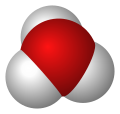 | |||
| |||
| Names | |||
|---|---|---|---|
| IUPAC name Hexafluorophosphoric acid [2] | |||
| Other names Hydrogen hexafluorophosphate Hydron hexafluorophosphate | |||
| Identifiers | |||
3D model (JSmol) | |||
| ChemSpider | |||
| ECHA InfoCard | 100.037.263 | ||
| EC Number |
| ||
PubChem CID | |||
CompTox Dashboard (EPA) | |||
| |||
| |||
| Properties | |||
| HPF6 | |||
| Molar mass | 145.972 g/mol | ||
| Appearance | colorless oily liquid | ||
| Melting point | decomposes at 25 °C | ||
| exists only in solution | |||
| Hazards | |||
| Occupational safety and health (OHS/OSH): | |||
Main hazards | Corrosive | ||
| GHS labelling: | |||
  | |||
| Danger | |||
| H301, H311, H314, H330 | |||
| P260, P264, P271, P280, P284, P301+P330+P331, P303+P361+P353, P304+P340, P305+P351+P338, P310, P320, P321, P363, P403+P233, P405, P501 | |||
Except where otherwise noted, data are given for materials in their standard state (at 25 °C [77 °F], 100 kPa). | |||
Hexafluorophosphoric acid refers to a family of salts produced by combining phosphorus pentafluoride and hydrofluoric acid. The idealized chemical formula for hexafluorophosphoric acid is HPF6, which also is written H[PF6]. [3] Hexafluorophosphoric acid is only stable in solution, decomposing to HF and PF5 when dry. [4] It exothermically reacts with water to produce oxonium hexafluorophosphate ([H3O]+[PF6]−) and hydrofluoric acid. Additionally, such solutions often contain products derived from hydrolysis of the P-F bonds, including HPO2F2 , H2PO3F , and H3PO4 , and their conjugate bases. [5] Hexafluorophosphoric acid attacks glass. Upon heating, it decomposes to generate HF. Crystalline HPF
6 has been obtained as the hexahydrate, wherein PF−
6 is enclosed in truncated octahedral cages defined by the water and protons. NMR spectroscopy indicates that solutions derived from this hexahydrate contain significant amounts of HF. [5]
Whereas a species with the formula HPF6 remains unknown, the analogous molecular hexafluoroarsenic acid (HAsF6) has been crystallized. [6]

